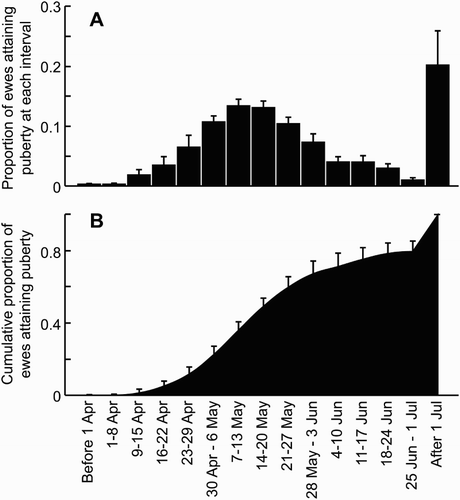Figures & data
Figure 1. Pattern of NLB and weaned, and average weaning weight of the lamb at different ewe ages (from Edwards et al. Citation2015, Citation2016). (A) The average NLB and weaned (NLW) for ewes at various ages. (B) The average weight of the lamb at weaning (adjusted for age at weaning) for ewes at various ages. Direct comparisons were available between ewes at one and 2 years of age (Edwards et al. Citation2016) and from ewes at 2, 3 and 4 years of age (Edwards et al. Citation2015). Measurements from 2-year-old dams were used to normalise data between data sets.
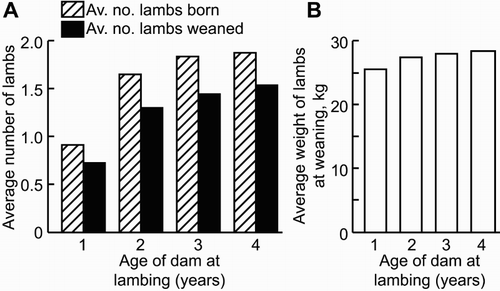
Figure 2. Schematic diagram of factors influencing reproductive output of ewe hoggets. The hogget ewe must first attain puberty and be mated by the fertile ram. The upper limit of her reproductive potential is set by the number of ova she releases at mating. These ova must then be fertilised and undergo normal embryo and then foetal development. She must then deliver live lambs at birth and support them until weaning.
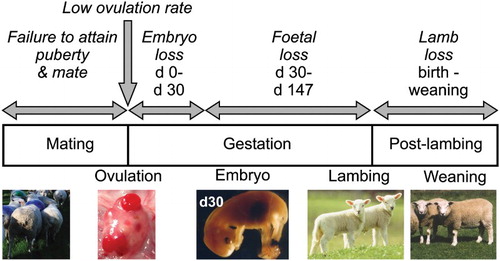
Figure 3. Schematic diagram of the organs and cells important for control of reproduction in sheep. The hypothalamus releases GnRH, which acts on the pituitary to control synthesis and release of FSH and LH. These two hormones act to stimulate the growth and maturation of the ovarian follicle. Hormones from the follicle also provide feedback to the hypothalamus and pituitary to regulate the release of FSH and LH in order to time the release of the oocyte. Oestradiol is a key hormone in coordinating the preovulatory LH surge, which causes release of the ovum from the follicle, and induces oestrus. The preovulatory LH surge also causes luteinisation of the remaining follicular cells to form the corpus luteum (CL). If pregnancy does not occur, the uterus releases prostaglandin F2α, which acts on the corpus luteum to cause regression of this structure, allowing another reproductive cycle to occur.
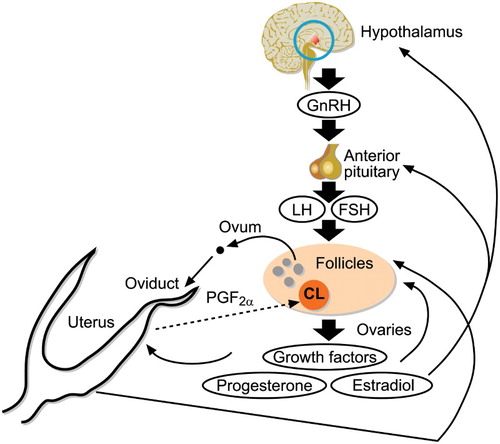
Figure 4. Key ovarian structures. (A) An ovary with two corpora lutea (CL) and various follicles. (B) A haematoxylin- and eosin-stained section of the ovary showing an antral follicle with oocyte, granulosa cells and theca indicated.
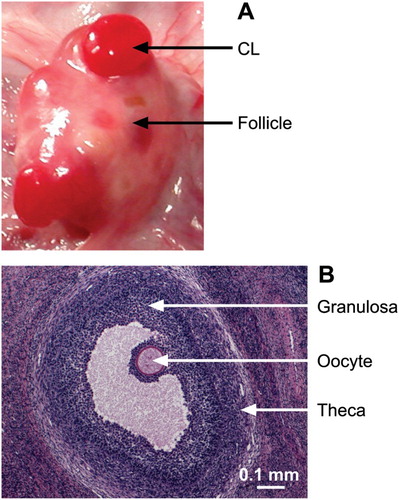
Figure 5. The effect of OR of reproductive performance (from Edwards & Juengel Citation2016). (A) Average OR and number of lambs scanned at approximately day 35 of gestation for hoggets and young adult ewes (approximately 20 months of age) from a flock with a normal OR and a flock with a high OR (heterozygous carriers of the Inverdale gene). (B) The respective pattern of ewes carrying zero, one, two, or three or more embryos for the high and normal OR ewes at 2 years of age. Data from ewes that were bred by the fertile ram during a 17-day period (i.e. one reproductive cycle).
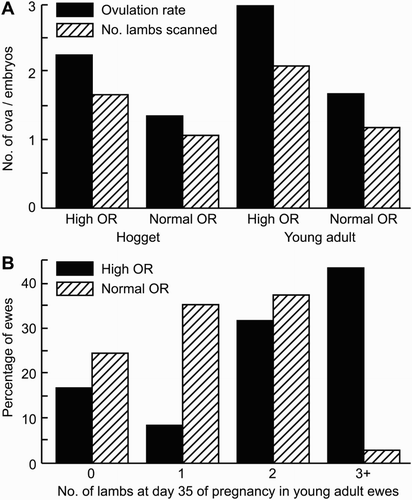
Figure 6. The timing of attainment of puberty in ewe hoggets (from Edwards & Juengel Citation2016). (A) The average (+SEM) proportion of hoggets that attain puberty in a given week. (B) The cumulative proportion (+SEM) of ewes that have attained puberty by a given week.
